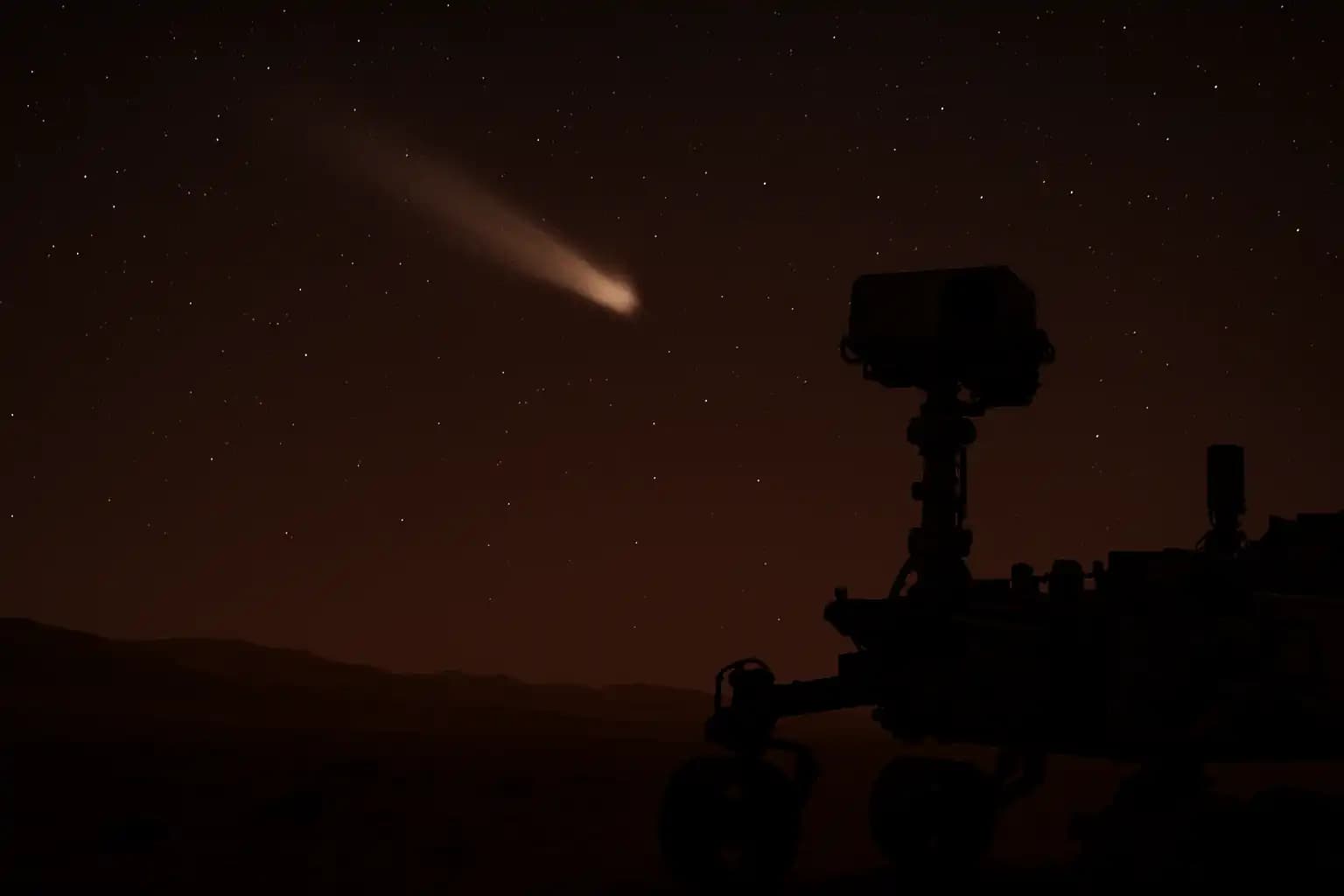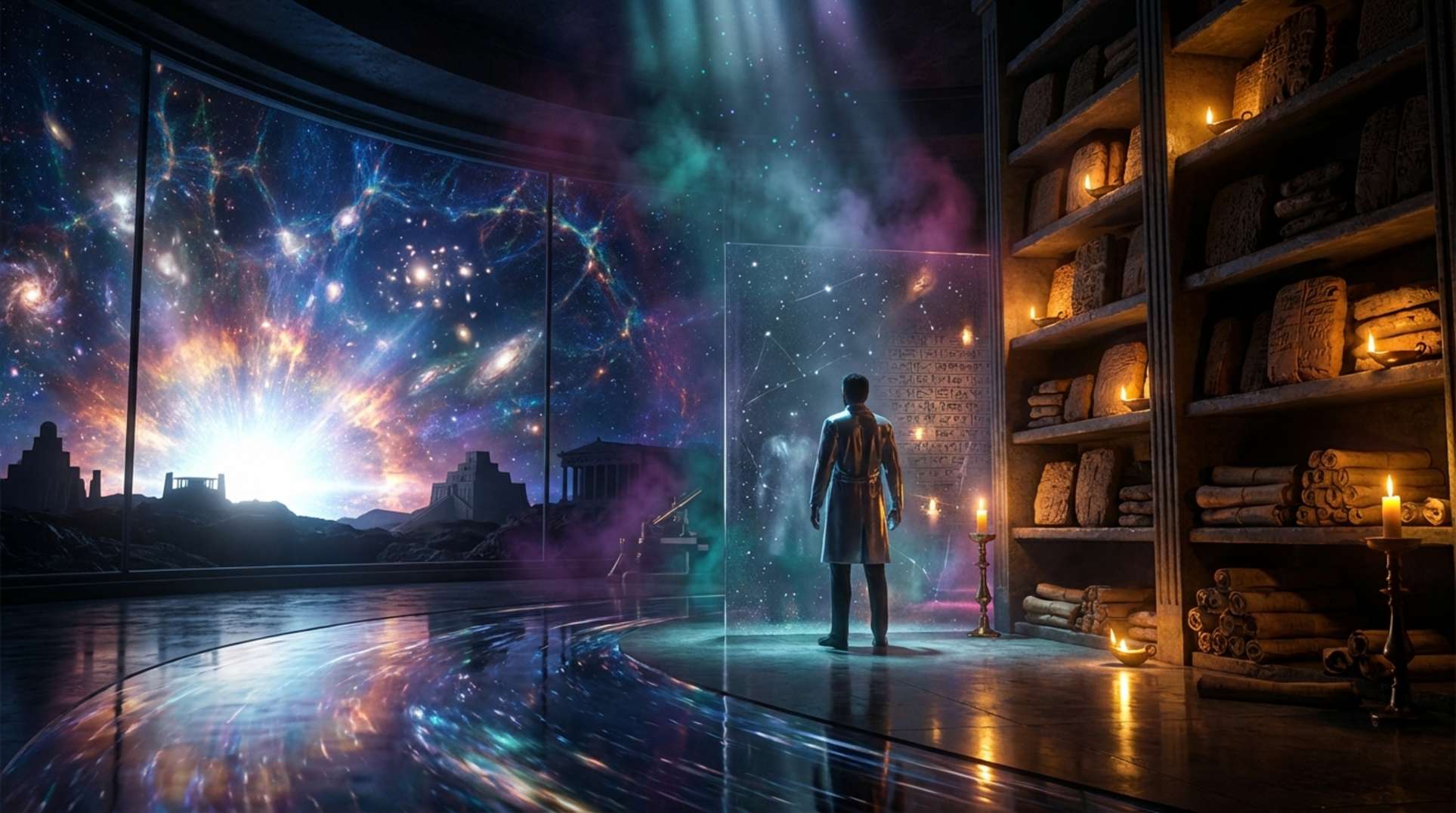October 2025 marks a pivotal moment for solar system science and sky-watching. Recently, interstellar object 3I/ATLAS approached Mars, coming within about 29 million kilometers. For the first time, we have actual images of this cosmic visitor captured by a robot explorer on the Red Planet. Earth’s telescopes went dark while 3I/ATLAS passed behind the Sun. Fortunately, a global network monitored Mars orbiters and the Perseverance rover, training their optics on the mysterious object’s celestial flyby.
How Perseverance and Mars Orbiters Captured 3I/ATLAS’s Close Encounter
When 3I/ATLAS flew by Mars on October 3rd, all major Mars-based instruments readied for action. According to detailed field notes from astrophysicist Avi Loeb, amateur astronomer Simeon Schmauß used long-exposure Mastcam-Z images from Perseverance. He revealed a faint smudge precisely where 3I/ATLAS was predicted to cross the Martian night sky. The European Space Agency confirmed in an official statement that Mars Express, ExoMars, and other orbiters aimed their powerful spectrometers and cameras at the closest approach, capturing even blurrier glimpses.
In contrast, Earth remained in the observational dark. As The Debrief reports, our planet stood nearly 240 million kilometers away, with 3I/ATLAS obscured by the Sun’s glare. This situation—when Earth telescopes cannot observe the interstellar comet—will probably last until late November. Thus, Mars serves as our sole eye on the visitor’s progress.
NASA and ESA mission managers recognized intense global interest, reflecting the excitement (and shadows) around other deep-space events. These include recent geomagnetic anomalies and classic deep-state intrigue surrounding Cape Canaveral.
Amateur Astronomers and Blurry Evidence: What Mars Really Saw
While professional agencies delayed official image releases, online forums buzzed with early “stacks” of Perseverance data processed by skilled amateurs. According to Loeb’s commentary, the smudge aligns with predictions—a small, indeterminate glow on the Martian sky’s edge. Instruments from Mars Express and Mars Reconnaissance Orbiter, along with ESA’s Juice spacecraft, are expected to enhance blurry rover data in the coming weeks.
Despite media speculation about artificial or “alien” structures (see debate over 3I/ATLAS’s potential engineered origin), experts like Loeb caution against jumping to conclusions. Resolution limits and stacking artifacts often create odd visual effects. Genuine anomalies, however, aren’t off the table. Historically, even the best interpretations can overlook outliers, a fact seen in both UFO investigations and terrestrial scientific surprises chronicled here.
What Makes 3I/ATLAS Unique: Size, Speed, and the Possibility of Maneuvers
Official NASA and ESA communications clarify key details: 3I/ATLAS, first detected on July 1, 2025, by a telescope in Chile, is the third known interstellar object to enter our system. According to NASA’s mission page, its size is still under estimation. Current estimates suggest a diameter between 440 meters and 5.6 kilometers—probably larger than 1I/’Oumuamua and 2I/Borisov. Initial evidence indicates a typical cometary coma, but its speed and approach angle—along with oddities in its orbital alignment—spark ongoing debates about natural versus artificial origins. Peer-reviewed astronomers stress that “maneuvers” remain unconfirmed. Still, continued monitoring, especially once observations resume from Earth in December, may clarify whether 3I/ATLAS behaves like a standard icy object or something much stranger.
These lingering questions echo recent case studies at the crossroads of space anomalies and global security, where sudden discoveries can alter scientific consensus almost overnight.
Gaps, Delays, and the Power of Interplanetary Observation
From October through late November, Mars will be the only accessible site for direct observation of 3I/ATLAS. ESA confirms that more data will emerge from Juice and Mars-based assets as orbits realign. In the meantime, the blurry first images—while frustrating—serve as a hard-won reminder of global collaboration in this golden era of space science.
Why is this important? Beyond technical pride, capturing interstellar objects on Martian soil validates our networked approach to discovery. Whether 3I/ATLAS proves to be ancient cosmic debris, asteroid fragments, or engineered technology, the global effort to “see first” embodies the thrill of space exploration. It also aligns with strategies seen in AI-driven discovery and research every day. For those following this event, Unexplained.co remains your hub for the latest in cosmic observation and deep-space drama.




